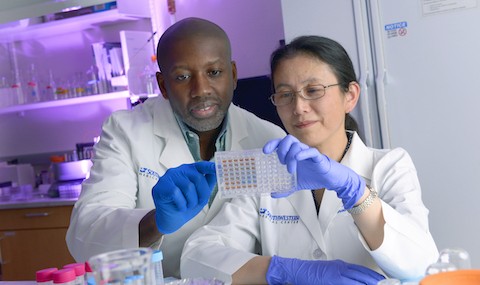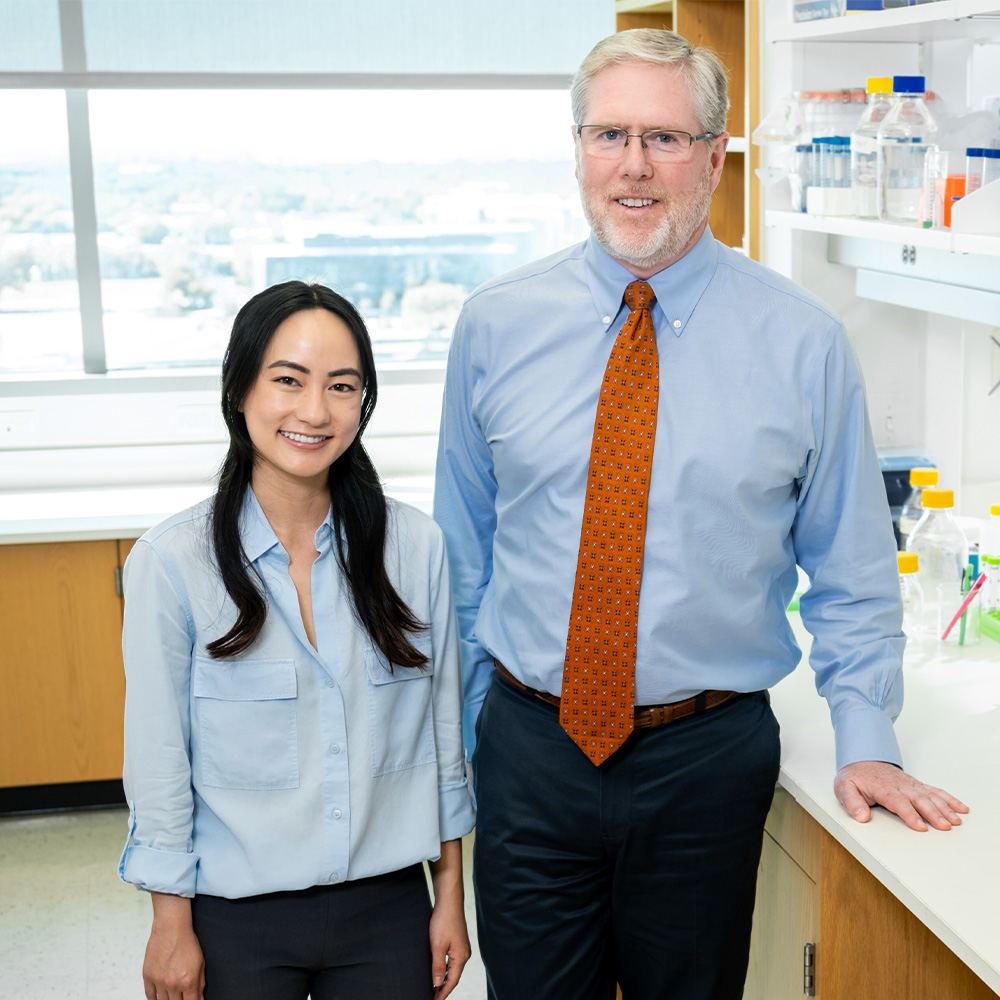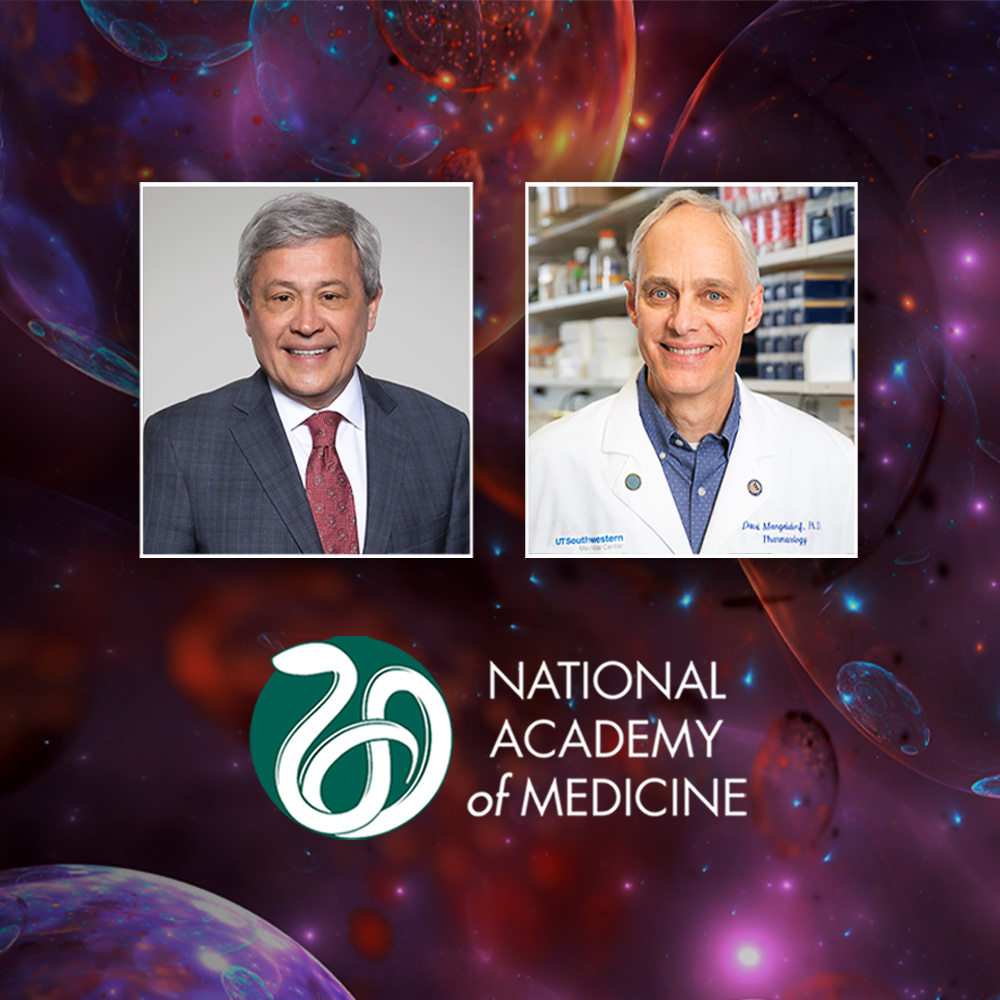Nanoparticle therapy that uses LDL and fish oil kills liver cancer cells

DALLAS – Feb. 8, 2016 – An experimental nanoparticle therapy that combines low-density lipoproteins (LDL) and fish oil preferentially kills primary liver cancer cells without harming healthy cells, UT Southwestern Medical Center researchers report.
“This approach offers a potentially new and safe way of treating liver cancer, and possibly other cancers,” said study senior author Dr. Ian Corbin, Assistant Professor in the Advanced Imaging Research Center (AIRC) and of Internal Medicine at UT Southwestern. “The method utilizes the cholesterol carrier LDL, combined with fish oil to produce a unique nanoparticle that is selectively toxic to cancer cells.”
The study was published in the February issue of the journal Gastroenterology.
Primary liver cancer, or hepatocellular carcinoma, is the sixth most prevalent type of cancer and third-leading cause of cancer-related deaths worldwide, according to the National Cancer Institute (NCI). Incidence of the disease is rising in the U.S., principally in relation to the spread of hepatitis C virus infection.
An editorial in the same issue of the journal notes that drug-based treatments for liver cancer are limited and that the UT Southwestern study showed “truly remarkable results that should prompt further research under preclinical settings, given its potential to lead to a paradigm shift in treatment.” More common treatments include surgical resection, liver transplantation, and ablation.
Fish oils are particularly rich in omega-3 fatty acids such as docosahexaenoic acid, also known as DHA. A 2012 study in Gastroenterology found that consumption of fish rich in omega-3 fatty acids was associated with protection against the development of liver cancer in patients with hepatitis B or hepatitis C infections.
Although several studies have reported an association between cancer prevention and omega-3 fatty acids, there have not been any studies showing benefits of omega-3 fatty acids against established tumors, Dr. Corbin said. Our study suggests established tumors would need to be exposed to higher concentrations of omega-3 fatty acids than could be achieved through diet, he added.
In the UT Southwestern study, conducted in rats, the newly formulated LDL-DHA nanoparticles were injected into the artery leading to the liver, the site of the cancer, he said.
“This research study clearly demonstrates the anticancer potential of omega-3 fatty acids,” he said, adding that while the study showed significant cancer cell toxicity, it is too soon to tell whether the approach is able to kill every cancer cell. Future experiments will examine that question, as well as whether the LDL-DHA strategy improves long-term cancer survival, he added.
Dr. Corbin, a member of the Harold C. Simmons Comprehensive Cancer Center, led a multidisciplinary team spanning the fields of lipid biochemistry, cancer biology, nutritional science, biotechnology, and advanced imaging to create and characterize the novel nanoparticle formulation.
He said this work builds on the UT Southwestern collaboration of Dr. Michael Brown and Dr. Joseph Goldstein in the late 1970s leading to their 1985 Nobel Prize. Their discovery of the LDL receptor and their efforts to understand how the protein functioned are credited with laying the foundation for the development of the blockbuster class of cholesterol-lowering statin drugs. Dr. Brown, Director of the Erik Jonsson Center for Molecular Genetics, holds the W.A. (Monty) Moncrief Distinguished Chair in Cholesterol and Arteriosclerosis Research. Dr. Goldstein, Chairman of Molecular Genetics, holds the Julie and Louis A. Beecherl, Jr. Distinguished Chair in Biomedical Research. Both are Regental Professors and hold the Paul J. Thomas Chair in Medicine.
“In trying to understand the biology of the LDL receptor, they conducted reconstitution experiments in which they removed the usual cholesterol content from LDL and added different types of cholesterol molecules. In our study, we used that method to formulate LDL combined with DHA as a possible cancer treatment,” Dr. Corbin explained.
“We knew that cancer cells like to take up LDL in order to acquire cholesterol and other lipids to help build their cell membranes as they proliferate. So what we have here is a classic example of a Trojan horse. The cancer cell thinks it’s getting cholesterol to provide the nutritional building blocks needed to grow and proliferate. Instead, it gets a payload of fish oil in the form of LDL-DHA nanoparticles that are selectively toxic to cancer cells without harming normal liver cells,” he said.
The researchers gave rats with liver cancer either the LDL-DHA nanoparticles or control treatments of LDL without DHA, which were expected to have no effect. After three days, the tumors in controls had grown large and developed a good blood supply, which is essential to cancer growth. In contrast, the LDL-DHA rats had smaller, pale tumors with poor blood supply. In fact, more than 80 percent of their tumor cells were dying, the researchers reported.
“In conclusion, our study demonstrates that LDL-DHA nanoparticles have potent anti-cancer activity,” they wrote.
UT Southwestern researchers contributing to this study included lead author Dr. Xiaodong Wen, senior research associate in the AIRC; Dr. Lacy Reynolds, former Cancer Biology graduate student; Dr. Rohit Mulik, former postdoctoral researcher in the AIRC; Soo Young Kim and Tim Van Treuren, former summer research fellows; Liem Nguyen, graduate student in Cancer Biology; and Dr. Hao Zhu, Assistant Professor in the Children’s Medical Center Research Institute at UT Southwestern, Internal Medicine, and Pediatrics.
This work was supported in part by the American Gastroenterological Association Research Foundation Scholar Award, the Southwestern Small Animal Imaging Research Program, the National Cancer Institute, and a UT Southwestern President’s Research Council Award.
The Harold C. Simmons Comprehensive Cancer Center is the only NCI-designated comprehensive cancer center in North Texas and one of just 45 NCI-designated comprehensive cancer centers in the nation. Simmons Cancer Center includes 13 major cancer care programs with a focus on treating the whole patient with innovative treatments, while fostering groundbreaking basic research that has the potential to improve patient care and prevention of cancer worldwide. In addition, the Center’s education and training programs support and develop the next generation of cancer researchers and clinicians.
The Simmons Comprehensive Cancer Center is among only 30 U.S. cancer research centers to be named a National Clinical Trials Network Lead Academic Participating Site, a prestigious new designation by the NCI, and the only cancer center in North Texas to be so designated. The designation and associated funding is designed to bolster the cancer center’s clinical cancer research for adults and to provide patients access to cancer research trials sponsored by the NCI, where promising new drugs often are tested.
About UT Southwestern Medical Center
UT Southwestern, one of the premier academic medical centers in the nation, integrates pioneering biomedical research with exceptional clinical care and education. The institution’s faculty has included six who have been awarded Nobel Prizes since 1985. The faculty of almost 2,800 is responsible for groundbreaking medical advances and is committed to translating science-driven research quickly to new clinical treatments. UT Southwestern physicians provide medical care in about 80 specialties to more than 92,000 hospitalized patients and oversee approximately 2.2 million outpatient visits a year.
###
Media Contact: Deborah Wormser
214-648-3404
Email
To automatically receive news releases from UT Southwestern via email,
subscribe at www.utsouthwestern.edu/receivenews




